Cannaregio
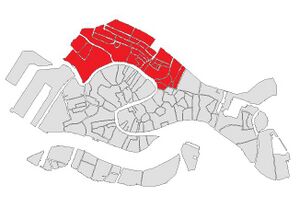
Cannaregio is one of the sestieri of Venice, Italy. Venice is divided up into six sestieri Cannaregio, San Polo, Dorsoduro, Santa Croce, San Marco, and Castello. Out of the six districts, Cannaregio has the largest population of about 20,000 people, as well as the largest by area of land. Cannaregio is located in northern Venice with the Grand Canal running along its southwest border. The train station, Santa Lucia, is located in Cannaregio. Another outlet from Venice connecting the island to Mestre, the mainland, is the Ponte della Liberta.
History
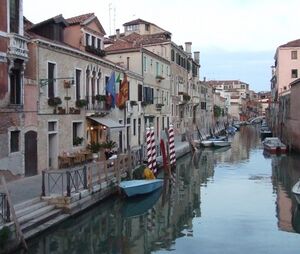
In the eleventh century, development in Cannaregio began when the land was drained and the local canals were dredged. This area was mainly populated by the working class with the exception of the inhabitants of the palaces in the sestiere. Between 1516 and 1797, the Jewish population of Venice was forced to live in the Venetian Ghetto, which is located in Cannaregio. They remained in the Ghetto until Napoleon Bonaparte conquered Venice in 1797. Many years later in the nineteenth century, Strada Nuova, a busy street connecting most of Cannaregio, was built by civil engineers. At the same time, the Ponte della Liberta was built. Today, Cannaregio is largely a residential sestiere.
Attractions
Ca’d’Oro
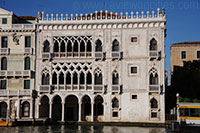
This palace, originally known as Palazzo Santa Sofia, was designed by Giovanni Bon and his son Bartolomeo in 1420. The building was completed in 1430. This building demonstrates Bon's gothic style that resembles Byzantine architecture. The building got its nickname, Ca' d'Oro, because of the intricate detailing on the outside including decoration with such materials as gold leaf, vermilion, and ultramarine.
The last private owner of the palace was Baron Giorgio Franchetti. In 1922, Franchetti left the palace to the State of Venice. Today, Ca’ d’Oro is a public gallery housing Franchetti’s art collection, which features works by Venetian artists Titian, Tintoretto, Carpaccio, and Tiepolo.
Campo dei Mori
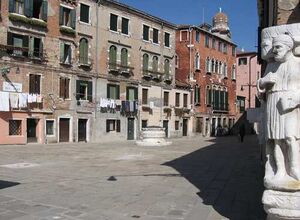
Another site tourists often visit is the Campo dei Mori, which is a statue depicting the three Mastelli brothers. All three brothers were medieval traders. Rioba, Sandi, and Afani Mastelli resided in a palace near the placement of the statue. This statue represents Venice’s dominance in trading.
Jewish Ghetto
The Jewish Ghetto is also part of Cannaregio. This area of Cannaregio is rich with Jewish heritage and it is the origin of the term “ghetto” derived from getto, which translates to casting. In 1492, Jewish refugees were forced to leave Spain and settle in an area in Venice, Italy. This area was Cannaregio. The Jewish people were given a curfew and armed boats patrolled the waters around the area. Five synagogues were established in Cannaregio. Today, 33 Jewish people still reside in the ghetto, which over 450 of them live else where in Venice.
Casino of Venice
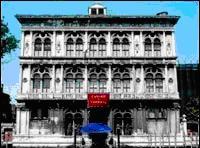
The first palace built during the Renaissance is found in Cannaregio, which was the Palace of Ca’Vendramin Calergi. Today, this palace holds the Casinò of Venice. It is located on the Grande Canal. The palace was built in the 1481 and later in 1959 became a casino.
Churches
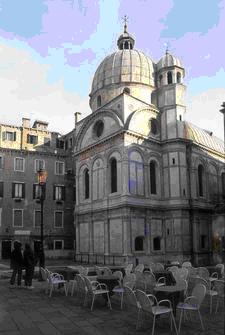
Cannaregio contains many interesting assets including beautiful churches. The some of churches in Cannaregio include Church of San Marziale, Church of Santa Maria dei Miracoli, Chiesa di San Giobbe, and Church of Madonna dell’Orto.
The Church of San Marziale was rebuilt between 1693 and 1721. The little church contains artwork by Antonio Vassilacchi, Domenico Cresti, Tintoretto, and Giulia Lama, while Sebastiano Ricci is responsible for the frescoes in the church.
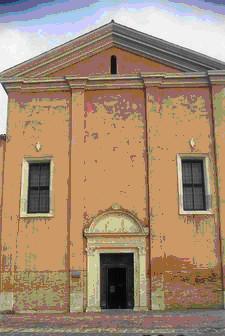
Nearby the Church of San Marziale is the Church of Madonna dell’Orto. Today, the church’s name originates from a miracle working statue of the Virgin Mary that was found in a nearby garden. The church was built in honor of St. Christopher, and was named after him; however the church’s name changed upon the finding of the miracle statue. There is also a large sculpture of St. Christopher depicted above the front door of the church.
The Church of S. Maria dei Miracoli was built by Pietro Lombardo and is located in southern Cannaregio. It was built between 1481 and 1489 to protect the painting, Virgin between two Saints. The painting is referred to as a miracle icon because it is said to have saved a man who had drowned. The painting can now be found on the alter. The church is made up of marble which was supposedly left from the Basilica of St. Mark.
The Chiesa di San Giobbe was built in the fourteenth century. Many architectural changes have been made to the church throughout time and it was also conquer by Napoleon. Doge Cristoforo Moro commissioned the building of the church along with the decorations done by Pietro Lombardo.
References
NULL